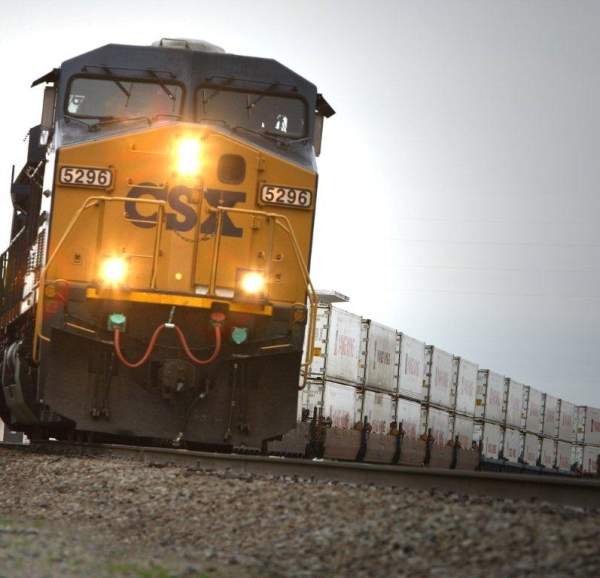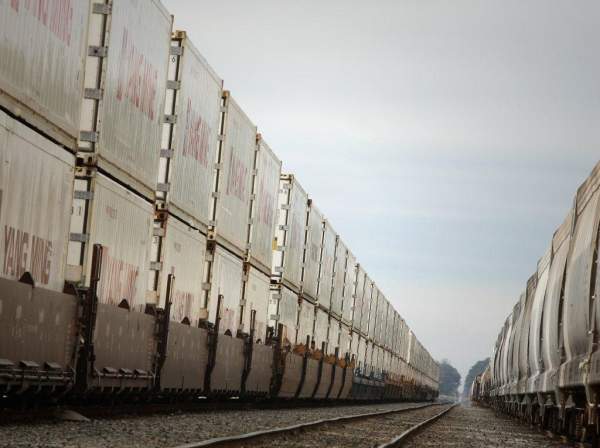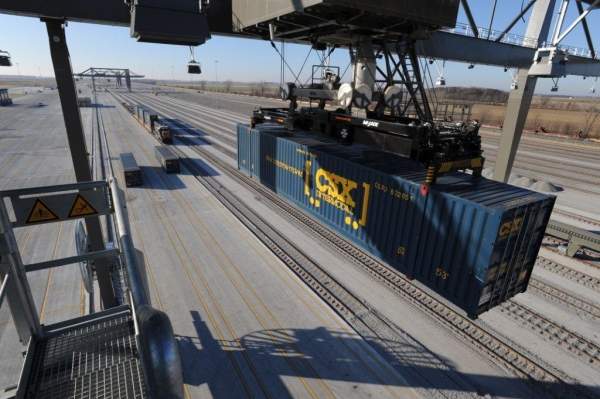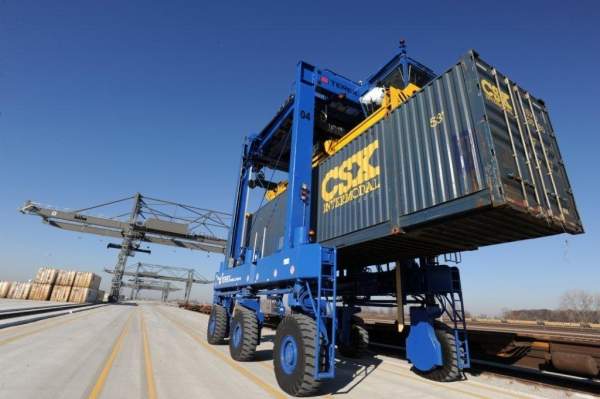The National Gateway is a major rail corridor improvement project under construction in the US. It will provide a more efficient rail route connecting the mid-atlantic ports and midwestern markets. It will improve the flow of rail traffic throughout the nation by increasing the use of double-stack trains.
The public-private partnership (PPP) project was launched in May 2008 and is estimated to cost $842m. It is sponsored by transportation company CSX Corporation along with Federal and State governments. It will create more than 50,000 jobs.
The rail corridor improvement is considered vital to the US economy as the current freight traffic of 15 billion tons is expected to reach 30 billion tons by 2050.
Double-stack trains travelling on the National Gateway can carry 100% more goods than conventional trains in one trip, resulting in improved efficiency, cost benefits and cutting 20 million tons of CO2 emissions.
National Gateway project details
The project will improve terminals, bridges and tunnels in six states and the District of Columbia and involves several upgrades to enhance rail and intermodal terminal capacity.
The tunnels and clearances under bridges will be increased to provide clearance for the double-stack trains travelling along the National Gateway. These works will be completed in three phases.
The National Gateway will better connect mid-atlantic seaports to consumers and manufacturing centres in the midwest upon its completion in 2015. It will improve several key freight rail corridors connecting mid-atlantic seaports and key midwest distribution centres.
These corridors are often referred to with the names of interstate highways as they run parallel to them. The I-95/I-81 rail corridor extends from North Carolina and Baltimore via Washington, D.C.
The I-70/I-76 Corridor runs from Washington, D.C. to northwest Ohio via Pittsburgh. The I-40/Carolina Corridor extends from Wilmington to Charlotte.
Construction of the expansive National Gateway network
Construction of the $175m Northwest Ohio Intermodal Terminal was officially commenced in August 2009. The terminal was opened in February 2011.
It is provided with five wide span cranes, eight working tracks, two straddle lanes, one truck lane, five container stacks and 18 block swap tracks. The $59m intermodal freight terminal expansion in Columbus is currently underway.
Vertical clearances will be provided at 61 locations on the National Gateway. Five of the locations were completed by September 2011 and 15 other locations are under construction.
These improvements are being carried out under the first phase of construction on the existing rail corridor between North Baltimore and Chambersburg.
Phase one of the construction also includes five tunnel upgrade projects under construction in Confluence, Hansrote and Magnolia.
The bridges in Hyndman and Chartiers Creek were renovated to accept double-stack trains. The antiquated pedestrian bridge was safely removed in Coraopolis and not replaced as requested by local officials.
CSX removed the Park Street overpass in Akron and is also replacing the damaged and archaic overhead highway bridge in Niles with a new structure.
CSX is also constructing four highway bridges. The tracks at three locations will be lowered for achieving clearance. The existing bridges in Kent, Ravenna and Paw Paw are being substituted with new structures.
Financing the major railway improvement project
More than $280m of the project cost is funded by the state and federal partners.
A $98m funding was provided under the TIGER Grant to a coalition of States in February 2010.
CSX announced in May 2011 that it will invest $160m in the National Gateway project over the next several years.
Most of these funds will be used to renovate the century-old Virginia Avenue Tunnel in Washington.
The latest investment brings the projected funding by CSX to about $575m over the coming years.
Contractors involved in the project
The National Gateway project is supported by 336 public and private sector organisations and individuals. The major contractors and suppliers include Mosser Construction, Big Lots, Schneider National, Sears Holdings, Pacer Rail, Greater Findlay and OOCL.







